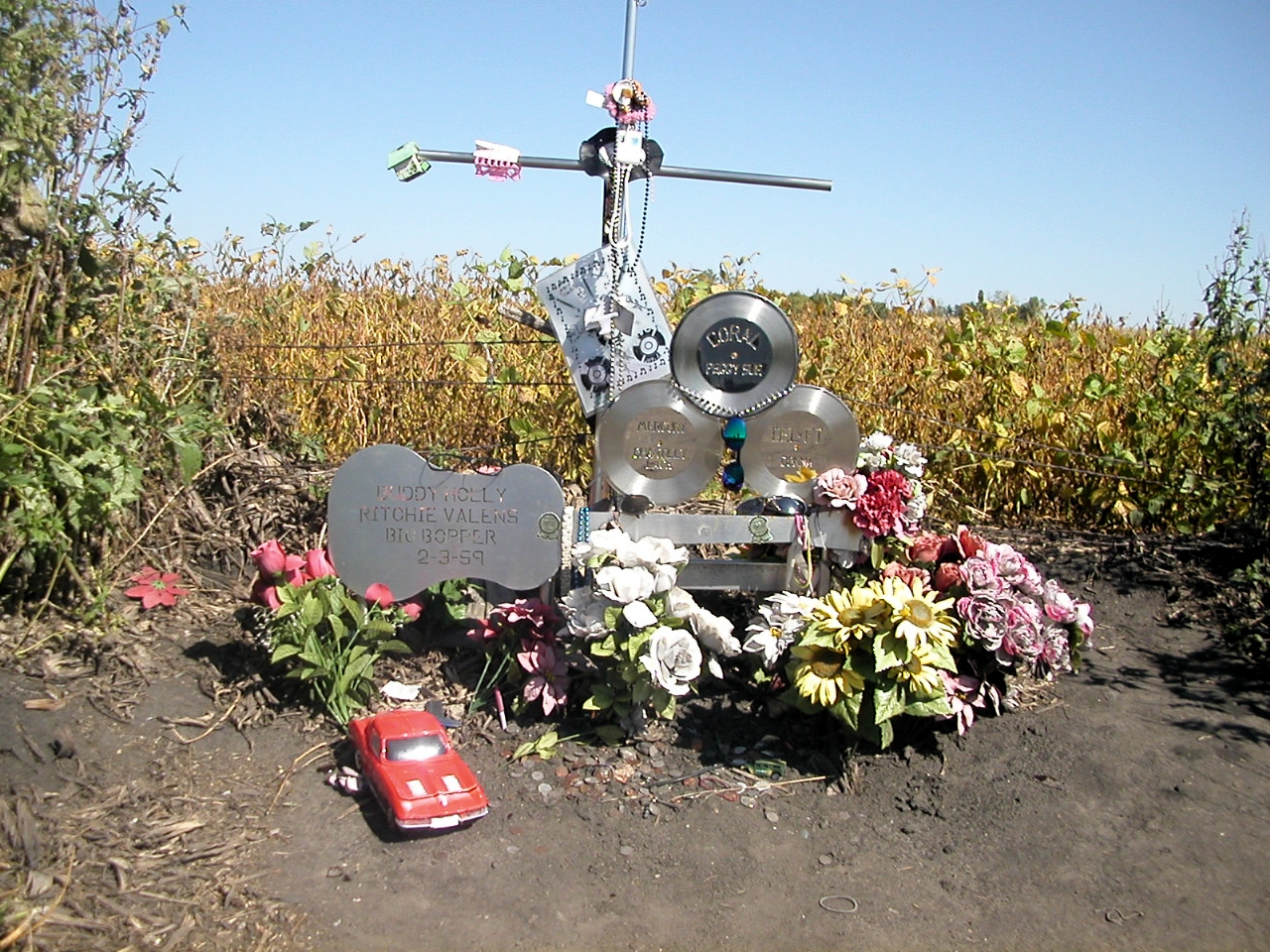
Flying in bad visibility with minimum instrumentation, minimum training, minimum everything is how a lot of people come unstuck.
Buddy Holly was rather special. Then he died but his music lives on. He copped it along with Ritchie Valens and The Big Bopper near Clear Lake, Iowa on The Day the Music Died. It was in 1959.
He made it to England in 1958, to London as well. See The Buddy Holly 1958 Tour. If only I had known. Or look at https://www.songkick.com/artists/421966-buddy-holly/gigography?page=2 - were you there?
You can see some home movie footage made by his manager at https://www.youtube.com/watch?v=08_R8xkZKec. Missing The Beatles playing when they were near The Reeperbahn in Hamburg was another disappointment. Hindsight is so much easier.
Hear for yourself -
Buddy Holly - Everyday
-
Ritchie Valens - La Bamba
-
Big Bopper - Chantilly Lace
Buddy's memorial is at
Clear Lake, Iowa

Flying in bad visibility with minimum instrumentation, minimum training, minimum
everything is how a lot of people come unstuck.
Buddy Holly ex Wiki
Charles Hardin Holley (September 7, 1936 – February 3, 1959), known as Buddy Holly, was an American musician and singer/songwriter who was a central figure of mid-1950s rock and roll. Holly was born in Lubbock, Texas, to a musical family during the Great Depression; he learned to play guitar and to sing alongside his siblings. His style was influenced by country music and rhythm and blues acts, and he performed in Lubbock with his friends from high school. He made his first appearance on local television in 1952, and the following year he formed the group "Buddy and Bob" with his friend Bob Montgomery. In 1955, after opening for Elvis Presley, Holly decided to pursue a career in music. He opened for Presley three times that year; his band's style shifted from country and western to entirely rock and roll. In October that year, when he opened for Bill Haley & His Comets, Holly was spotted by Nashville scout Eddie Crandall, who helped him get a contract with Decca Records.Holly's recording sessions at Decca were produced by Owen Bradley. Holly was unhappy with Bradley's restrictions and the results of their work, and went to producer Norman Petty in Clovis, New Mexico, where, among other songs, they recorded a demo of "That'll Be the Day". Petty became the band's manager and he sent the demo to Brunswick Records, which released it as a single credited to "The Crickets", which became the name of Holly's band. In September 1957, as the band toured, "That'll Be the Day" topped the US "Best Sellers in Stores" chart and the UK Singles Chart. Its success was followed in October by another major hit, "Peggy Sue".
In November 1957, the album Chirping Crickets was released; it reached number five on the UK Albums Chart. By January 1958, Holly had appeared twice on The Ed Sullivan Show. Following his second performance on the show, he toured Australia and then the UK. In early 1959, Holly assembled a new band consisting of future country music icon Waylon Jennings (bass) and Tommy Allsup (guitar), and embarked on a tour of the Midwestern U.S. After a show in Clear Lake, Iowa, Holly chartered an airplane to travel to his next show in Moorhead, Minnesota. Soon after takeoff, the plane crashed, killing Holly, Ritchie Valens, the Big Bopper, and the pilot, in a tragedy later elegized by Don McLean as The Day the Music Died.
During his short career, Holly wrote, recorded, and produced his own material. He is often regarded as the act that defined the traditional rock-and-roll lineup of two guitars, bass, and drums. Holly was a major influence on later popular music artists and bands, including the Beatles, the Rolling Stones, Eric Clapton, and Elton John. He was among the first acts to be inducted into the Rock and Roll Hall of Fame in 1986, and later ranked by Rolling Stone at number 13 on its list of "100 Greatest Artists Of All Time".
The Big Bopper ex Wiki
Jiles Perry "J. P." Richardson Jr. (October 24, 1930 – February 3, 1959), known as The Big Bopper, was an American musician, singer, songwriter, and disc jockey. His best known compositions include "Chantilly Lace" and "White Lightning", the latter of which became George Jones' first number-one hit in 1959. Richardson was killed in a plane crash in Clear Lake, Iowa in 1959, along with fellow musicians Buddy Holly and Ritchie Valens, and the pilot Roger Peterson.[1] The accident was famously referred to as "The Day the Music Died" in Don McLean's 1971 song "American Pie".[2]
Ritchie Valens ex Wiki
Richard Steven Valenzuela (May 13, 1941 – February 3, 1959), known professionally as Ritchie Valens, was an American singer, songwriter, and guitarist. A rock and roll pioneer and a forefather of the Chicano rock movement, Valens was killed in a plane crash eight months into his recording career.[3]Valens had several hits, most notably "La Bamba", which he had adapted from a Mexican folk song. Valens transformed the song into one with a rock rhythm and beat, and it became a hit in 1958,[4][5] making Valens a pioneer of the Spanish-speaking rock and roll movement. He also had an American number 2 hit with ''Donna''.
On February 3, 1959, on what has become known as "The Day the Music Died", Valens died in a plane crash in Iowa, an accident that also claimed the lives of fellow musicians Buddy Holly and J. P. "The Big Bopper" Richardson, as well as pilot Roger Peterson. In 2001, Valens was inducted into the Rock and Roll Hall of Fame.